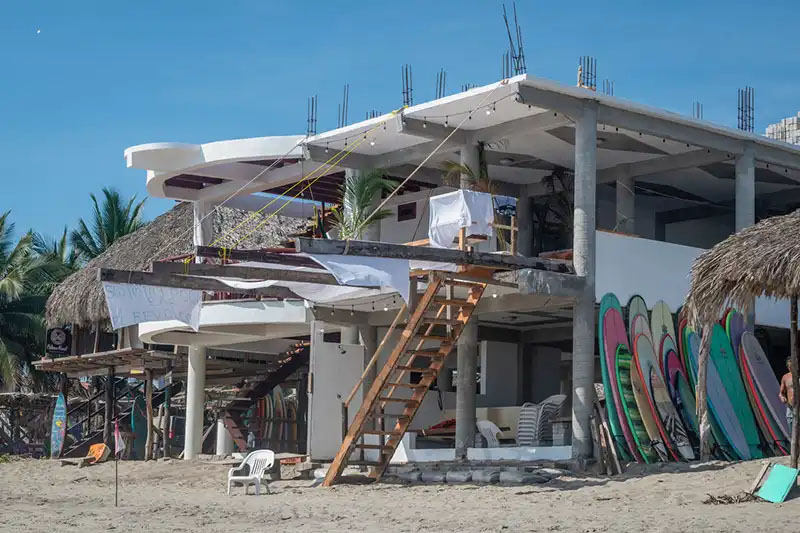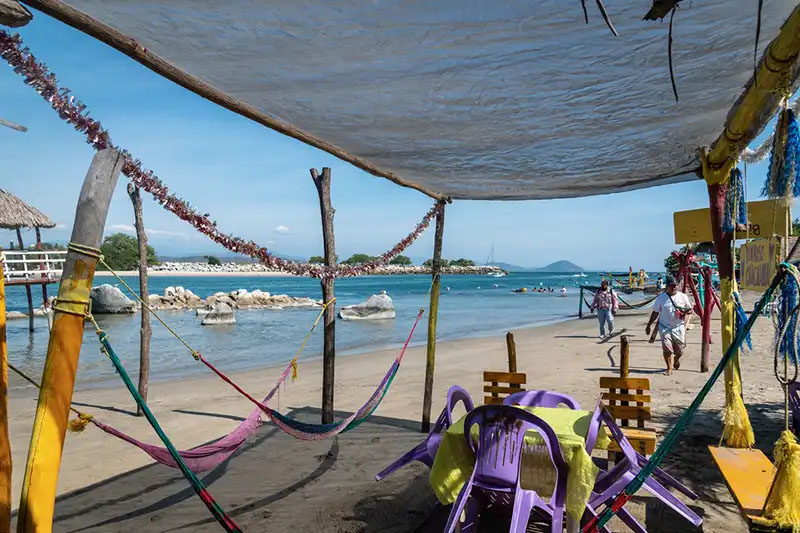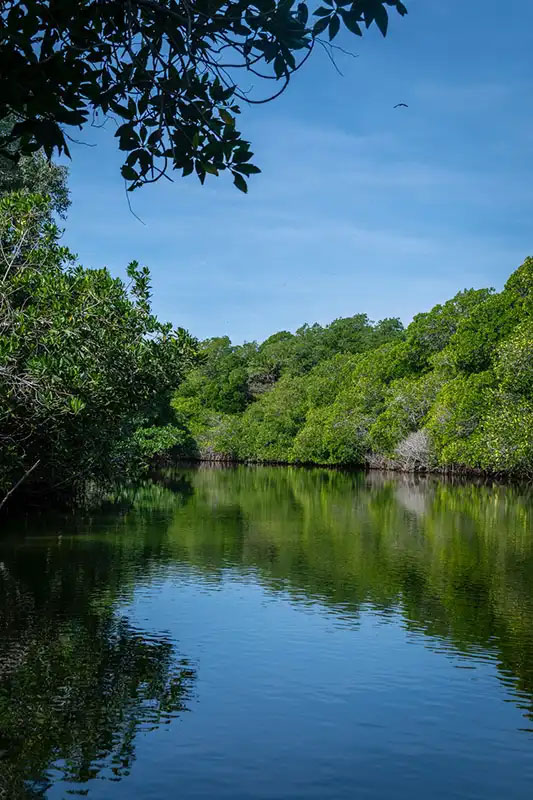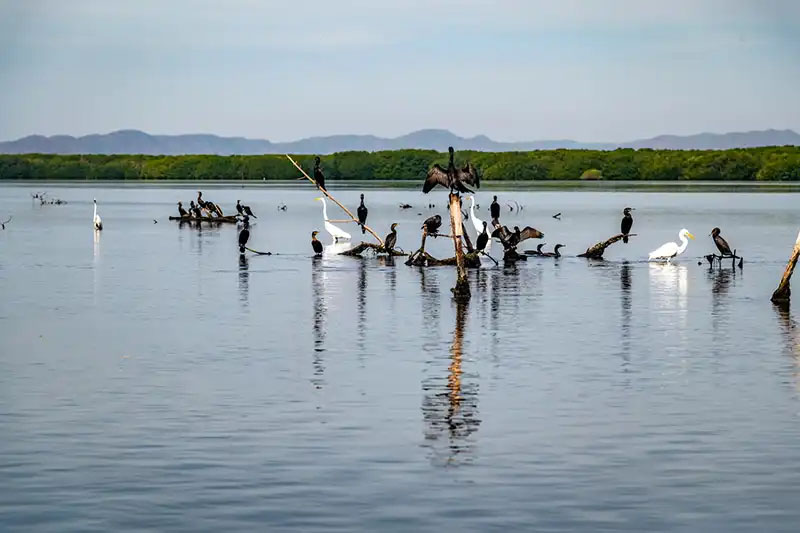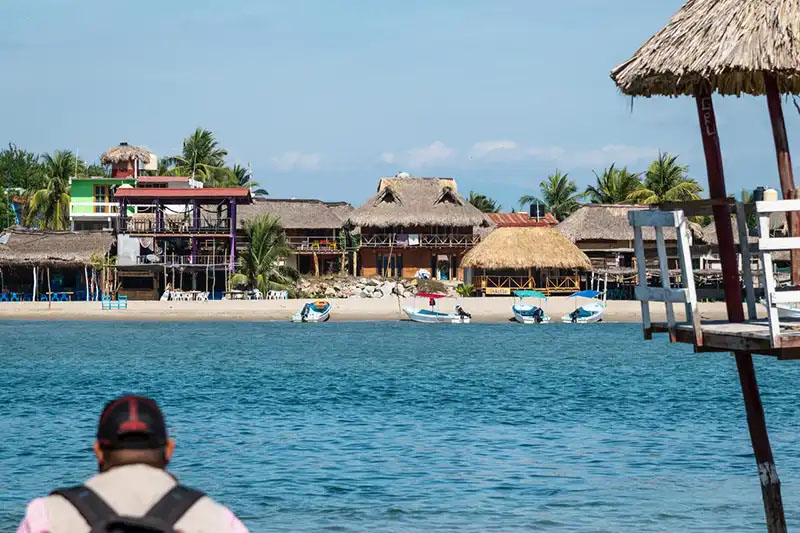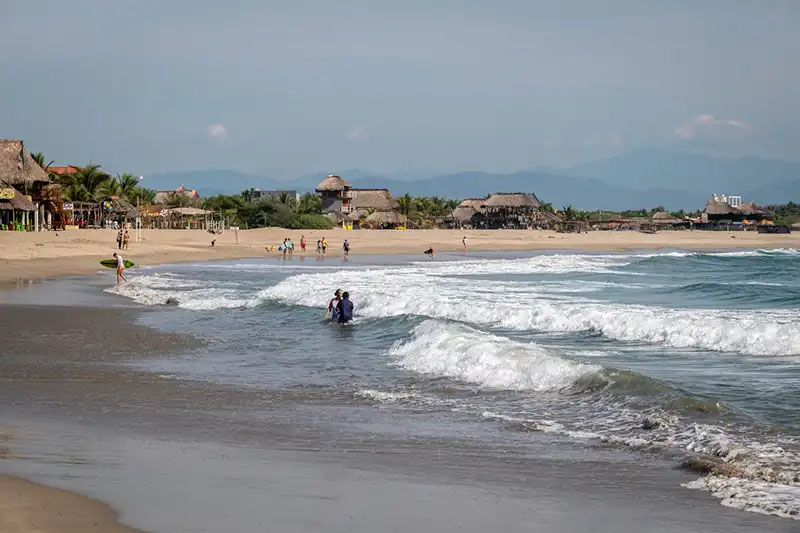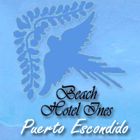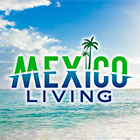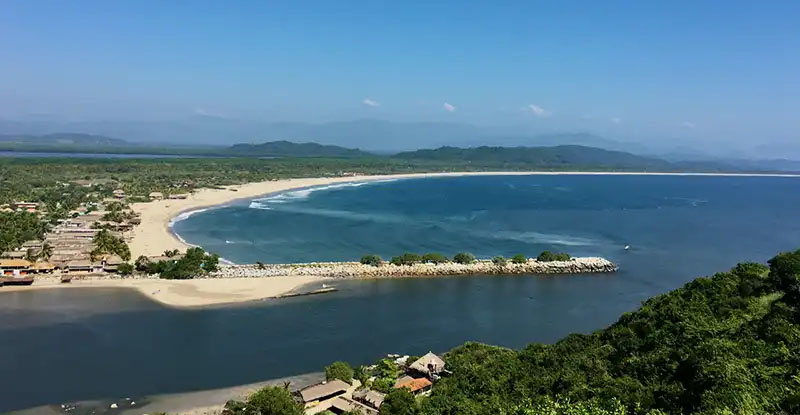
Chacahua
Some of us arrive in Puerto Escondido and know we do not have to travel any further. But travel we do, if only on short journeys up and down the coast or into the mountains. My favorite escape is to Chacahua, to those immense lagoons of still water that perfectly reflect both sky and mangroves. As soon as I am on the launch I know I have arrived inside a dream I had forgotten.
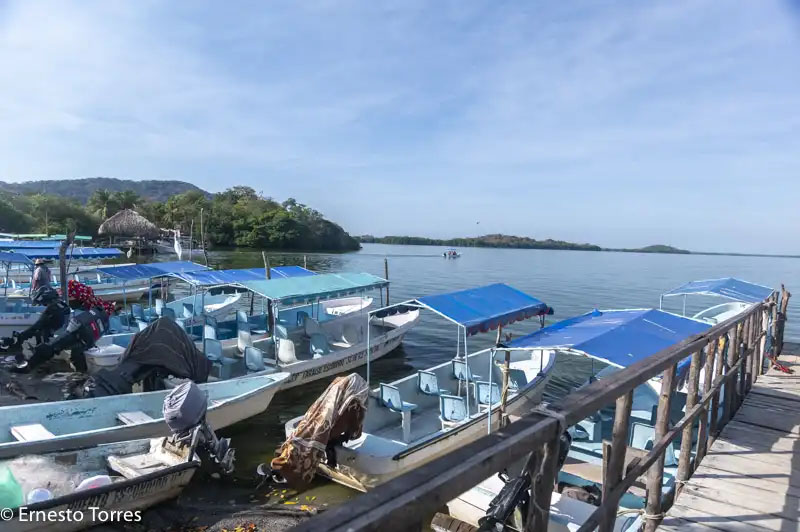
Mangroves are enormous trees with external vine-like roots that grow in salt-water lagoons. Each tree is an island hosting a variety of crustaceans, insects and birds. You can only enter a mangrove forest by canoe as the trees are often very close to each other. The motorized launch takes you through the open areas of the lagoon past the forests.
You don't need to be a bird watcher or an ecologist to enjoy the ornithological and biological splendor of the lagunas of Chacahua, but it helps to have a predisposition to abandoning oneself to great expanses of tranquil beauty: the play of light on the water, an odd shaped cloud you might not have noticed if you weren't on a boat, the lone man or woman fishing from canoes hidden in the mangroves beneath branches sheltering herons and pelicans.
When, after an hour, the launch takes you to the village of Chacahua, which is where the sea enters the lagoon, you find yourself in another lost world. No cars, no internet, just a few hundred people who mostly live in palapas. But there are restaurants on the beach and cabins to stay in. There has been a lot of construction along the beach this year, however, and the place is packed with college students from Mexico City during Christmas and Easter vacations. During the summer its waves attract surfers.
Chacahua became Mexico’s first national park in 1937. The mangroves are protected and can only be entered by canoe. A highlight of your visit should be a canoe trip through the dense mangrove forests at sun set - the best time to see the birds, and to experience the dark, labyrinth-like canals. There are also excursions to see the bioluminescence.
The best robalo and pargo we’ve ever had (Ernesto and I are afficionados) is served at the Palapa Denio Pacheco, a short hop (by boat) across from the port.
Although you can drive to Chacahua by taking the turn-off onto a dirt road at San José del Progreso, Tututepec, (and then cross to the beach by boat), the most direct route from Puerto is through Zapotalito. The driving time from Puerto is around 60 minutes. The turn-off is around 15 minutes from Río Grande. (You can't miss it - there's a big sign for Zapotalito and sometimes a military check point.) You then continue down a paved road until you get to the boat landings. There you will find launches and off-street parking. Or you can take a bus to Río Grande and continue to Zapotalito by colectivo. The cost of the launches varies with the season.
Our guide was Rigoberto Cosme, Coop Paraiso Escondido, Zapotalito. 954 559 8440
